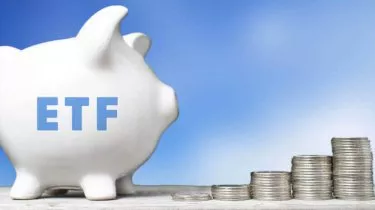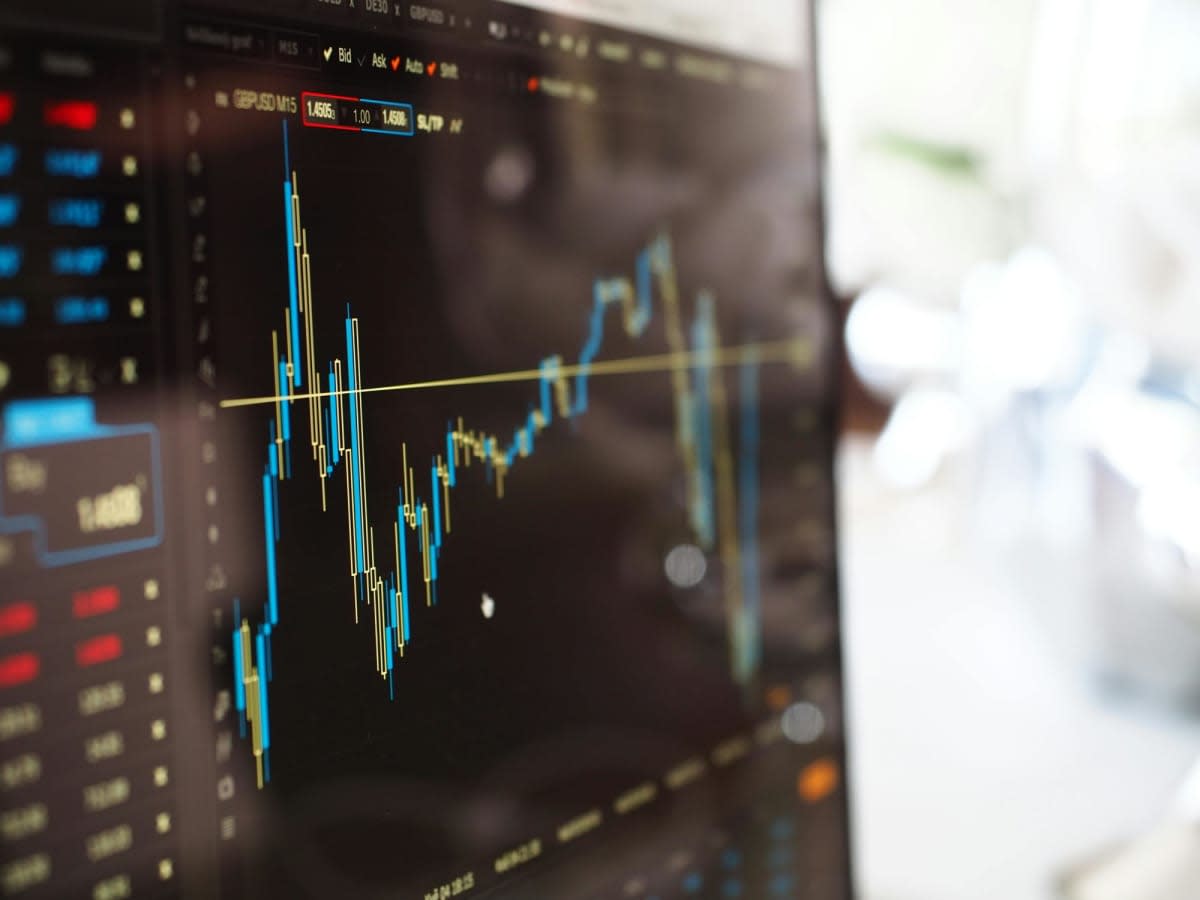Invest
Could a market correction turn ETFs into WTFs?
ETFs have grown 500 per cent in value since 2008 but the innovation in asset management is “yet to be tested in crisis conditions”, so how would it cope in a correction?
Could a market correction turn ETFs into WTFs?
ETFs have grown 500 per cent in value since 2008 but the innovation in asset management is “yet to be tested in crisis conditions”, so how would it cope in a correction?

As such, the question is whether a market correction would see ETFs “cushion the blow” or exacerbate the negative impacts, the World Economic Forum (WEF) said in its Global Risks Report 2018, released this week.
The Forum explained: “The world is eight years into a bull run, with global stock markets hitting all-time high after all-time high.
“This has raised fears that this is another episode of “irrational exuberance”, that the lessons of the crisis have gone unlearned, and that a deep correction may follow.”
An ETF, or exchange-traded fund, is an investment fund that is traded on a stock exchange and will typically track an asset or market index.

The WEF noted that the Dow Jones increased by 25 per cent in 2017, while the S&P grew 19 per cent, the DAX by 11 per cent, the Hang Seng in Hong Kong by 35 per cent and the Nikkei in Japan by 19 per cent, and said in terms of cyclically adjusted prices, US stocks have only been higher than they currently are twice in history, in 1929 and 2000. Those years mark periods “just prior” to market crashes.
Similarly, bond valuations are “even more dramatic”, the WEF said.
“In mid-2017, around 9 trillion US dollars’ worth of bonds were trading with a negative yield, meaning that investors were, in effect, paying bond issuers for the privilege of holding their risky financial instruments.
“This anomaly reflects the impact of the huge asset-purchase programmes launched by central banks in the wake of the crisis, which seem to have divorced asset prices from assessments of their underlying riskiness.”
However, together with surging property prices and cryptocurrency values, ETFs were listed as another potential risk.
The WEF claimed: “A further source of potential market risk at present is that innovations in financial assets and asset management have yet to be tested in crisis conditions.
“One example is the rapidly expanding class of ETFs, which have grown in value by 500 per cent since 2008 and now account for US$4 trillion of assets and around 25 per cent of all US stock market trading.
“Some analysts suggest that ETFs would cushion the blow of a major market correction, while others reckon they would exacerbate it.”
Deutsche Bank in September last year called the growth in ETFs value “extraordinary” and questioned whether the vehicle would be a “help or hindrance to markets going forward”.
Strategists Jim Reid, Craig Nicol, Nick Burns and Sukanto Chanda said: “Low costs, tax efficiency, low volatility, transparency of pricing and holdings, liquidity and of course the eight to nine-year bull market for risk assets in particular are all reasons which have helped fuel demand for these products.
“As the market has grown so has the investor base with the products appealing to both retail and institutional money.”
The strategists said that as ETFs are passive, index-tracking funds, they “naturally” favour large caps and that as such, this theoretically means the “biggest companies are getting bigger, regardless of fundamentals”.
“The concern therefore being that these companies are perhaps more susceptible to overvaluation and the gap between the small/mid to large caps also widening. This could potentially mean that risks are amplified when you see a big market correction, which arguably ETFs haven’t yet been tested with yet.”
Acknowledging that ETFs were testing following the collapse in oil prices in early 2016, the strategists said there were two main ways the vehicle’s reaction could be assessed.
“[When prices fell] trading volumes for the BlackRock iShares HYG and State Street JNK funds – the two biggest high yield ETFs – hit the highest on record,” the strategists began.
“One camp argued that the ETFs achieved one of their purposes in acting as a source of liquidity for the market. However the other camp argued that the managers of these ETFs were forced to sell underlying bonds into an illiquid market, compounding the selloff.”
However, Mr Reid and co. argued that ETFs have “not yet been fully tested in a sustained bear market”.
“The real test could be when we see the next downturn and these products are faced with heavy redemptions. This will be particularly paramount for less liquid asset classes,” they continued, arguing that the growth in more “exotic niche” ETFs further complicates the landscape.
Concluding, the strategists said ETFs demand scrutiny, “particularly in the context of their surge in popularity for retail investors and as with any market still somewhat in its infancy, the real test is probably still to come”.

Stock market
6K Additive secures A$48 million through initial public offering on the Australian Stock Exchange
6K Additive, a prominent player in the advanced metal powders and alloy additions market, has made a significant stride by successfully completing its Initial Public Offering (IPO) on the Australian ...Read more

Stock market
Institutional investors increase stock allocations to 18-year high amid cautious market shifts
In a recent development, State Street Markets unveiled the findings of its latest State Street Institutional Investor Indicators, revealing intriguing shifts in institutional investor behaviourRead more

Stock market
FOREX.com launches in Australia to empower self-directed traders
StoneX Group Inc. (NASDAQ: SNEX) has announced the Australian launch of FOREX.com, expanding access for self-directed traders to a global suite of Contracts for Difference (CFD) products across ...Read more

Stock market
Westpac and CMC Markets strengthen partnership to enhance online trading services
In a significant move that underscores the evolving landscape of online trading in Australia, CMC Markets Stockbroking has been chosen as the preferred vendor by Westpac Banking Corporation to extend ...Read more

Stock market
Portfolio reviews as an operating discipline: turning volatility into a competitive edge
In a higher-rate, higher-volatility world, portfolio reviews are no longer an annual hygiene task; they’re a core operating rhythm that protects cash flow, unlocks tax alpha, and sharpens risk ...Read more

Stock market
Fee war on the ASX: Global X’s A300 turns up the heat on core Aussie equity ETFs
Global X has lobbed a 0.04% management fee into Australia’s core equity sandbox, launching the Australia 300 ETF (A300) to take on entrenched giants. Read more

Stock market
Challenger IM shakes up the ASX with private credit note and a side of risk
Challenger Investment Management has taken private credit mainstream with an ASX-listed note structure—LiFTs—that secured roughly $100 million in cornerstone commitments within a day of launch. Read more

Stock market
International stocks: Diversifying your portfolio beyond Australia
In an increasingly globalized market, Australian investors have the opportunity to enhance their investment portfolio by incorporating international stocks. Diversifying your investments globally can ...Read more

Stock market
6K Additive secures A$48 million through initial public offering on the Australian Stock Exchange
6K Additive, a prominent player in the advanced metal powders and alloy additions market, has made a significant stride by successfully completing its Initial Public Offering (IPO) on the Australian ...Read more

Stock market
Institutional investors increase stock allocations to 18-year high amid cautious market shifts
In a recent development, State Street Markets unveiled the findings of its latest State Street Institutional Investor Indicators, revealing intriguing shifts in institutional investor behaviourRead more

Stock market
FOREX.com launches in Australia to empower self-directed traders
StoneX Group Inc. (NASDAQ: SNEX) has announced the Australian launch of FOREX.com, expanding access for self-directed traders to a global suite of Contracts for Difference (CFD) products across ...Read more

Stock market
Westpac and CMC Markets strengthen partnership to enhance online trading services
In a significant move that underscores the evolving landscape of online trading in Australia, CMC Markets Stockbroking has been chosen as the preferred vendor by Westpac Banking Corporation to extend ...Read more

Stock market
Portfolio reviews as an operating discipline: turning volatility into a competitive edge
In a higher-rate, higher-volatility world, portfolio reviews are no longer an annual hygiene task; they’re a core operating rhythm that protects cash flow, unlocks tax alpha, and sharpens risk ...Read more

Stock market
Fee war on the ASX: Global X’s A300 turns up the heat on core Aussie equity ETFs
Global X has lobbed a 0.04% management fee into Australia’s core equity sandbox, launching the Australia 300 ETF (A300) to take on entrenched giants. Read more

Stock market
Challenger IM shakes up the ASX with private credit note and a side of risk
Challenger Investment Management has taken private credit mainstream with an ASX-listed note structure—LiFTs—that secured roughly $100 million in cornerstone commitments within a day of launch. Read more

Stock market
International stocks: Diversifying your portfolio beyond Australia
In an increasingly globalized market, Australian investors have the opportunity to enhance their investment portfolio by incorporating international stocks. Diversifying your investments globally can ...Read more








